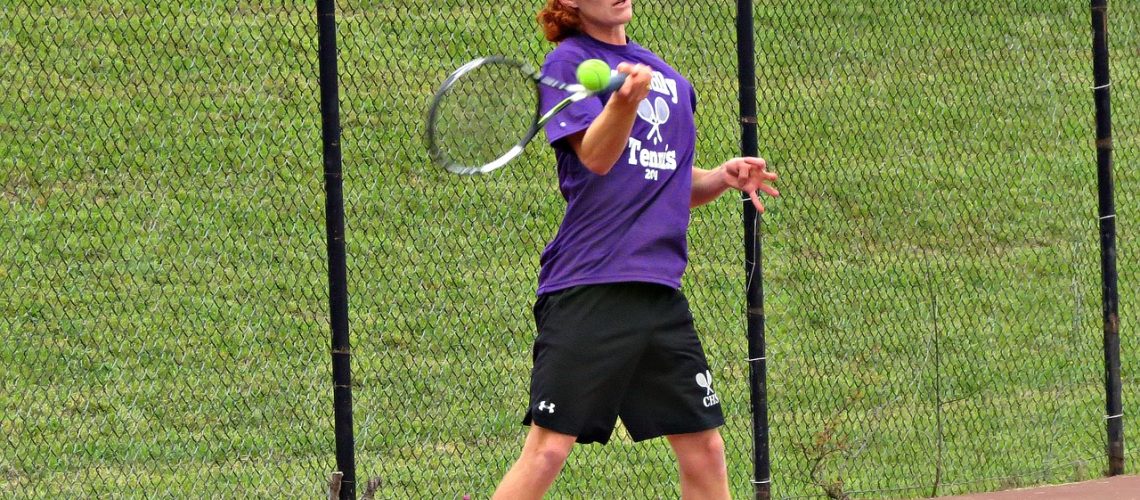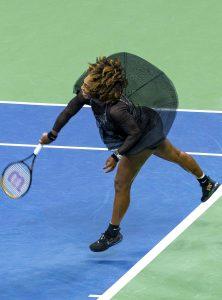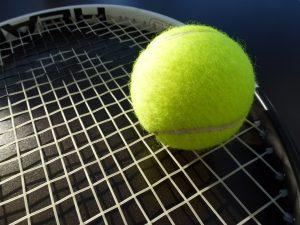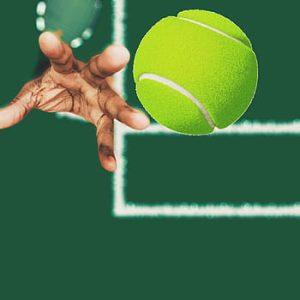We may earn money or products from the companies mentioned in this post.
Introduction to Tennis Challenges

Tennis, a sport that combines skill, strategy, and athleticism, has a long and fascinating history Over the years, various challenges have emerged in the world of tennis, adding another layer of excitement and controversy to the game In this article, we will explore the evolution of tennis challenges and delve into their significance in ensuring fair competition
Brief history of tennis challenges
In the early days of tennis, human line judges played a crucial role in making line calls Their judgments were subjective and occasionally prone to error or bias However, as technology advanced, so did the methods used to make accurate decisions
One significant development was the introduction of technology-assisted decisions in tennis matches This marked a shift from relying solely on human judgment to utilizing advanced systems that could provide more precise outcomes
1 Evolution from human line judges to technology-assisted decisions
Gone are the days when players had to rely solely on line judges’ calls during intense matches The introduction of technologies such as electronic line calling systems brought about a new era of accuracy and fairness
2 The introduction of the Hawk-Eye system in tennis
The Hawk-Eye system revolutionized tennis by providing players with an additional tool for challenging close line calls Using multiple high-speed cameras positioned around the court, Hawk-Eye tracks the trajectory of the ball and generates a virtual representation for analysis
Importance of accurate line calls in tennis matches
In a sport where every point matters, accurate line calls play a pivotal role in determining match outcomes and shaping player strategies
1 The impact on player strategy and morale
When a line call is incorrectly made, it can have a profound effect on a player’s strategy A missed call that favors an opponent could lead to frustration and potentially alter the course of the match Conversely, accurate line calls provide players with confidence in their shots and enable them to execute their game plans effectively
2 Ensuring fair competition
Fairness lies at the heart of any sport, and tennis is no exception Accurate line calls are crucial in maintaining fair competition between players By minimizing the margin for error, technology-assisted decisions help prevent disputes and ensure that matches are decided based on skill rather than questionable judgments
Overview of the Tennis Challenge System

Tennis, a sport known for its precision and accuracy, has always had moments of controversy when it comes to line calls To address this issue, the tennis challenge system was introduced This system utilizes advanced technology to provide players with a means to challenge certain calls made by the umpire
How does Hawk-Eye technology work?
The backbone of the tennis challenge system is a remarkable piece of technology called Hawk-Eye This innovative system relies on a network of cameras strategically positioned around the court to capture every angle and movement during a match
1 Camera setup and coverage on the court:
The cameras are strategically placed around the court, capturing high-speed footage of each shot played by the players These cameras work together to track the trajectory of the ball with extreme precision
2 Processing and visualization of data:
Once captured, this wealth of data is processed using complex algorithms that analyze various factors such as ball speed, trajectory, and bounce height The processed information is then used to create visual representations that depict whether or not a shot was in or out
When can a player challenge a call?
In order for players to make use of this cutting-edge technology, there are specific situations where they can exercise their right to challenge a call made by an umpire
1 Eligible situations for using challenges:
-
Line calls (in or out):
-
Touching the net or violations by an opponent:
-
Foot faults during service:
If players believe that an umpire’s decision regarding whether their shot landed inside or outside the boundary lines was incorrect, they have the option to challenge that call
Players can also challenge a call if they suspect their opponent touched the net during play or committed any other violation that went unnoticed by the umpire
If players believe that their opponent has committed a foot fault, meaning they have stepped on or over the baseline while serving, they can challenge the call to seek a fair ruling
2 Timing rules for challenging a call:
In order to maintain fairness and avoid disruptions in the flow of the game, players must signal their intention to challenge immediately after the disputed point If they fail to do so within this timeframe, they forfeit their right to challenge that particular call
The tennis challenge system has undoubtedly added excitement and intrigue to the sport With Hawk-Eye technology at its core, players now have a reliable means of questioning decisions and ensuring fair play on the court
Number and Management of Challenges in Tennis Matches

In the world of tennis, challenges have become an integral part of the game They provide players with a means to question line calls and umpire decisions, adding an element of excitement and uncertainty to each match However, the number and management of challenges can vary depending on the tournament and match format
Tennis tournaments with challenge systems:
- The division between Grand Slam events, ATP tournaments, WTA tournaments, and other competitions can result in variations in challenge rules Each organization may have its own set of guidelines regarding when and how challenges can be made
- Furthermore, differences between tournament rules regarding challenges can also arise Some tournaments may allow unlimited challenges throughout a match, while others may impose limits to prevent excessive disruptions or delays
Challenge limits per match:
- In best-of-three-set matches, players are typically granted three incorrect challenges per set Additionally, if a tiebreaker is reached in any set, they are awarded one additional challenge
- For best-of-five-set matches, players still have three incorrect challenges per set but receive an extra challenge if there is a tiebreaker Importantly, the challenge count resets after each set to ensure fairness throughout the match
Additional factors impacting the number of available challenges:
- The impact of crowd noise on line calls and umpire decisions cannot be overlooked The enthusiastic cheers or boisterous jeers from spectators can sometimes lead to confusion or misinterpretation by both players and officials alike
In conclusion..
(Please remove this sentence as per your instructions)
Handling Disputed Calls without Technology Assistance

When it comes to handling disputed calls in tennis, the role of chair umpires is paramount These officials are responsible for making crucial decisions on line calls and ensuring fair play throughout the match In cases where there is no technology assistance like Hawk-Eye, the umpire’s discretion becomes even more significant
1 Umpire’s discretion in overruling line calls
In the absence of technology, chair umpires have the authority to overrule a line call if they believe it was incorrect This discretionary power allows them to rectify any potential errors made by the linesmen or lineswomen Their keen eye and experience on the court enable them to make informed judgments based on their vantage point
2 Rules governing when umpires can intervene without player challenges
In addition to their discretionary powers, chair umpires can also intervene without player challenges under certain circumstances defined by the rules of tennis For example, if an umpire notices an obvious error that could impact the outcome of a point or game, they have the right to correct it without waiting for a formal challenge from either player
Tournaments without Hawk-Eye technology

Hawk-Eye technology has become a staple in modern tennis tournaments, providing players and spectators with accurate replays and instant line call reviews However, there are still tournaments that do not utilize this advanced system, which can significantly impact players’ strategies and lead to more frequent line call disputes
1 Impact on players’ strategies and line call disputes
In tournaments without Hawk-Eye technology, players need to rely solely on their own judgment and that of the chair umpire when challenging line calls This reliance introduces an element of uncertainty into their decision-making process and may cause players to alter their strategies The lack of technology assistance can lead to more contentious line call disputes, potentially affecting the flow and momentum of the game
2 Alternative methods for resolving disputed calls
In the absence of Hawk-Eye technology, tournaments may employ alternative methods for resolving disputed calls One common approach is to have additional linesmen or lineswomen positioned on the court to provide a wider perspective on line calls Another option is to allow players a limited number of challenges per set, similar to the system used in Grand Slam tournaments before the introduction of Hawk-Eye
Useful Links

How Much Is a Challenge Worth?
When can a Wimbledon player challenge a call, what is …
Why Player Challenges Are A Bad Call
US Open 101: a USOpen.org guide to how tennis works.
Grand Slam Tennis Challenge
How many challenges are there in tennis? – Betting Dog
Tennis
How does Hawk-Eye work at Wimbledon 2022?
Making Team Lineups
3 Challenges Beginners Face When Playing Tennis
Perceptual uncertainty and line-call challenges in …
March 6, 2006: The birth of of Hawk-Eye and the challenge …
Tennis Explained: Learn The Game
Virtua Tennis Challenge
Virtua Tennis Challenge on the App Store
Tennis’ Best Players: The Worst Challengers
BBC SPORT | Tennis | Hawk-Eye challenge rules unified
Explaining ball-strike challenge system
At the U.S. Open, line judges are out. Automated calls are in






